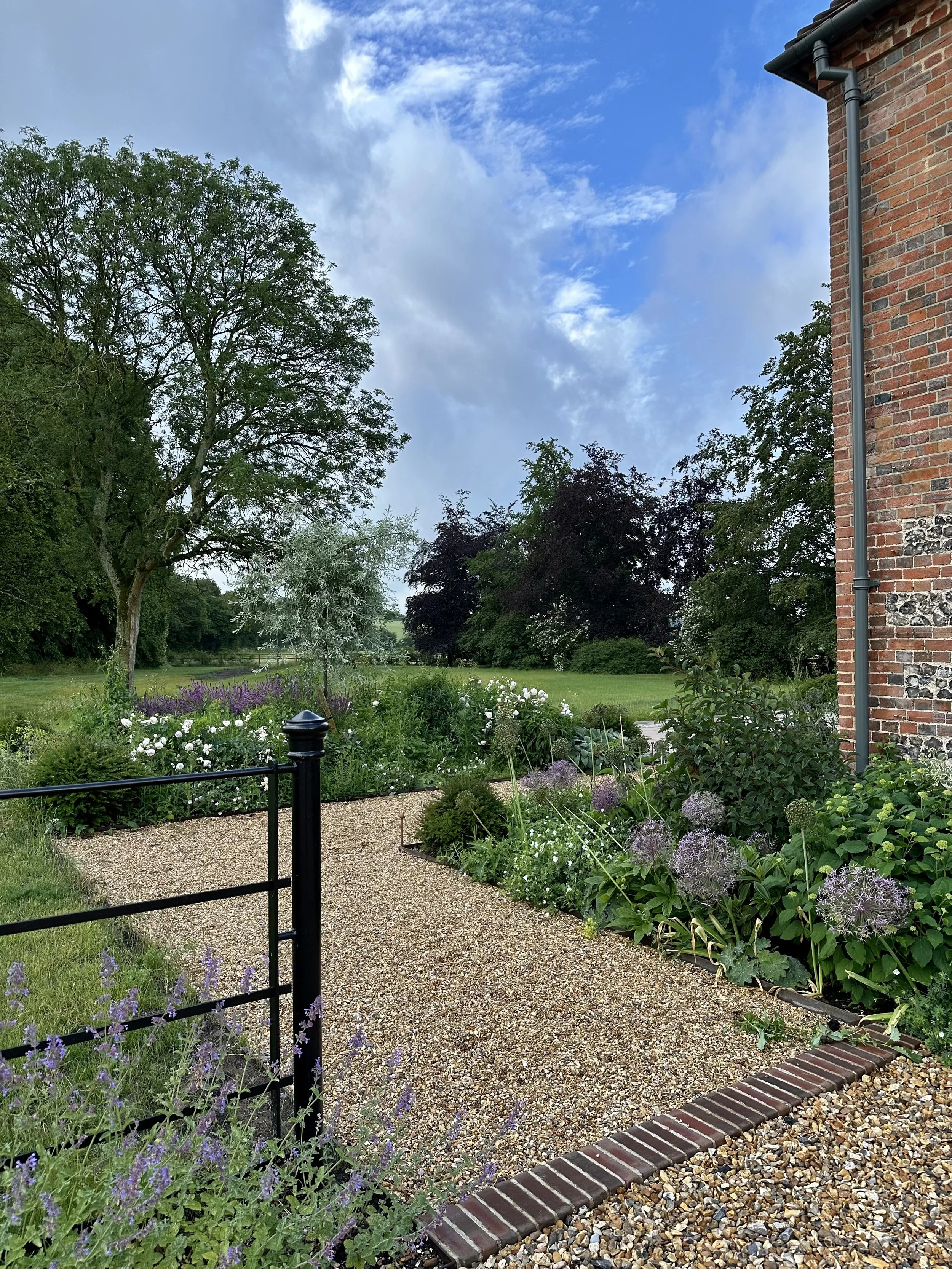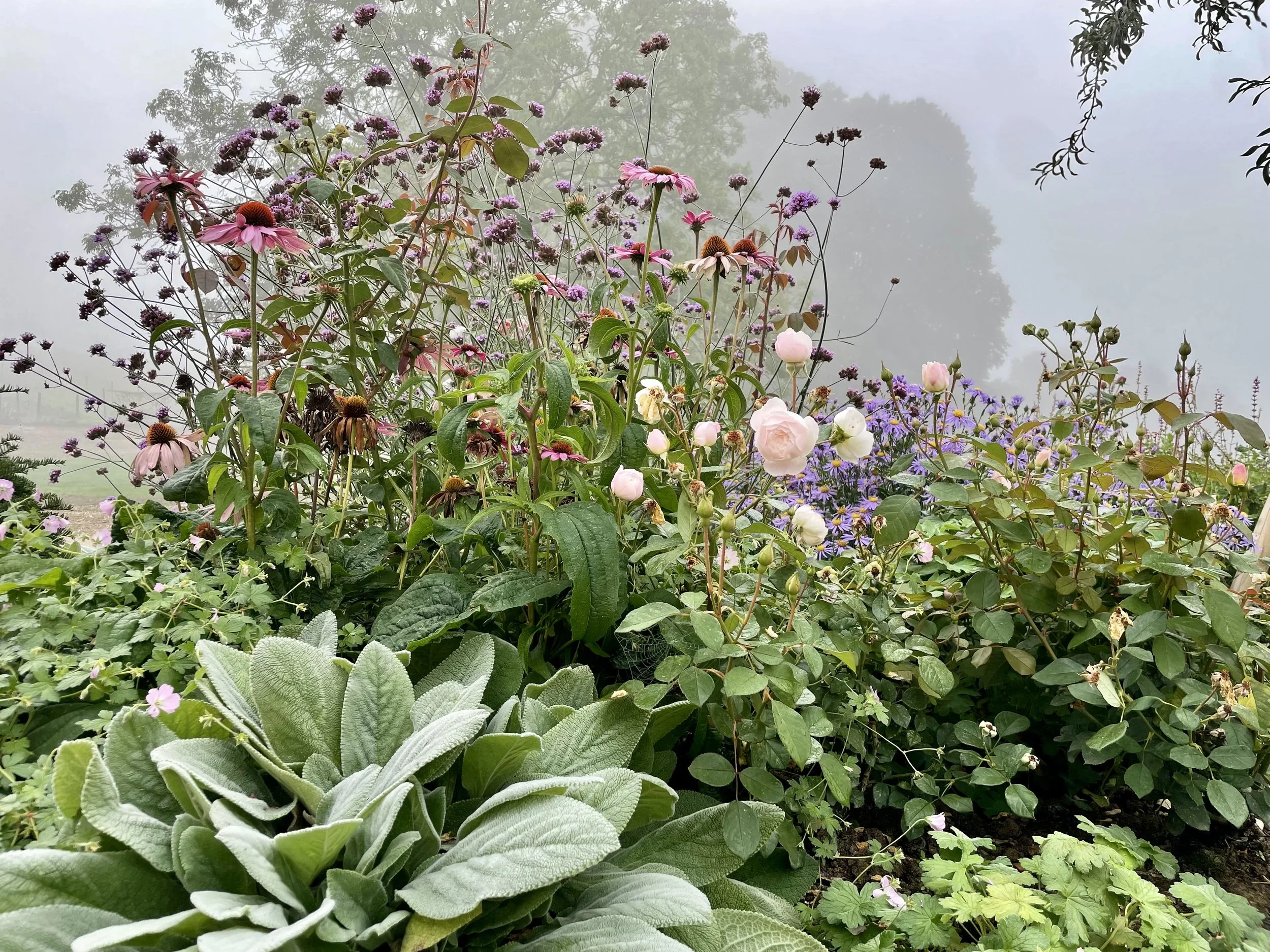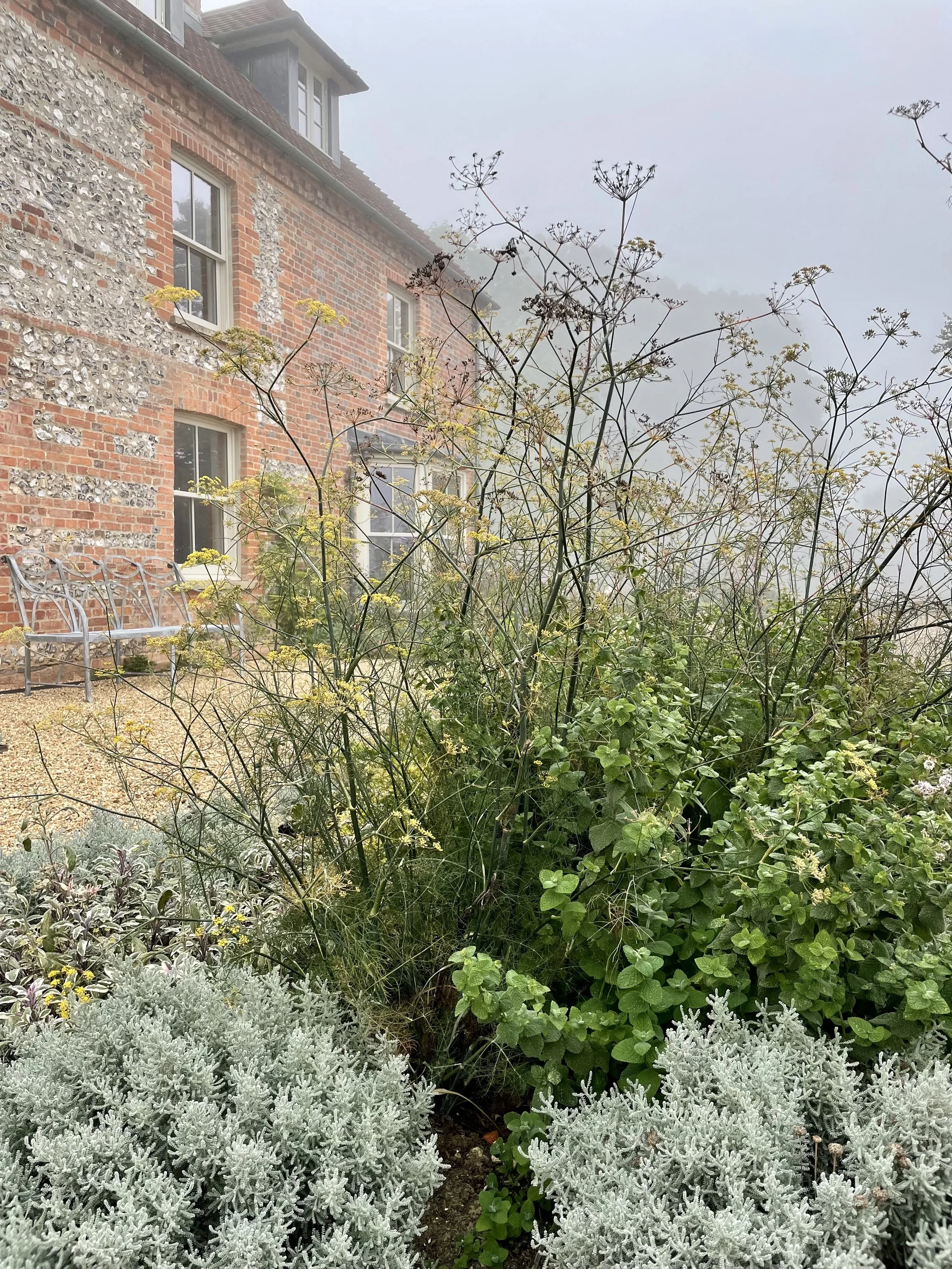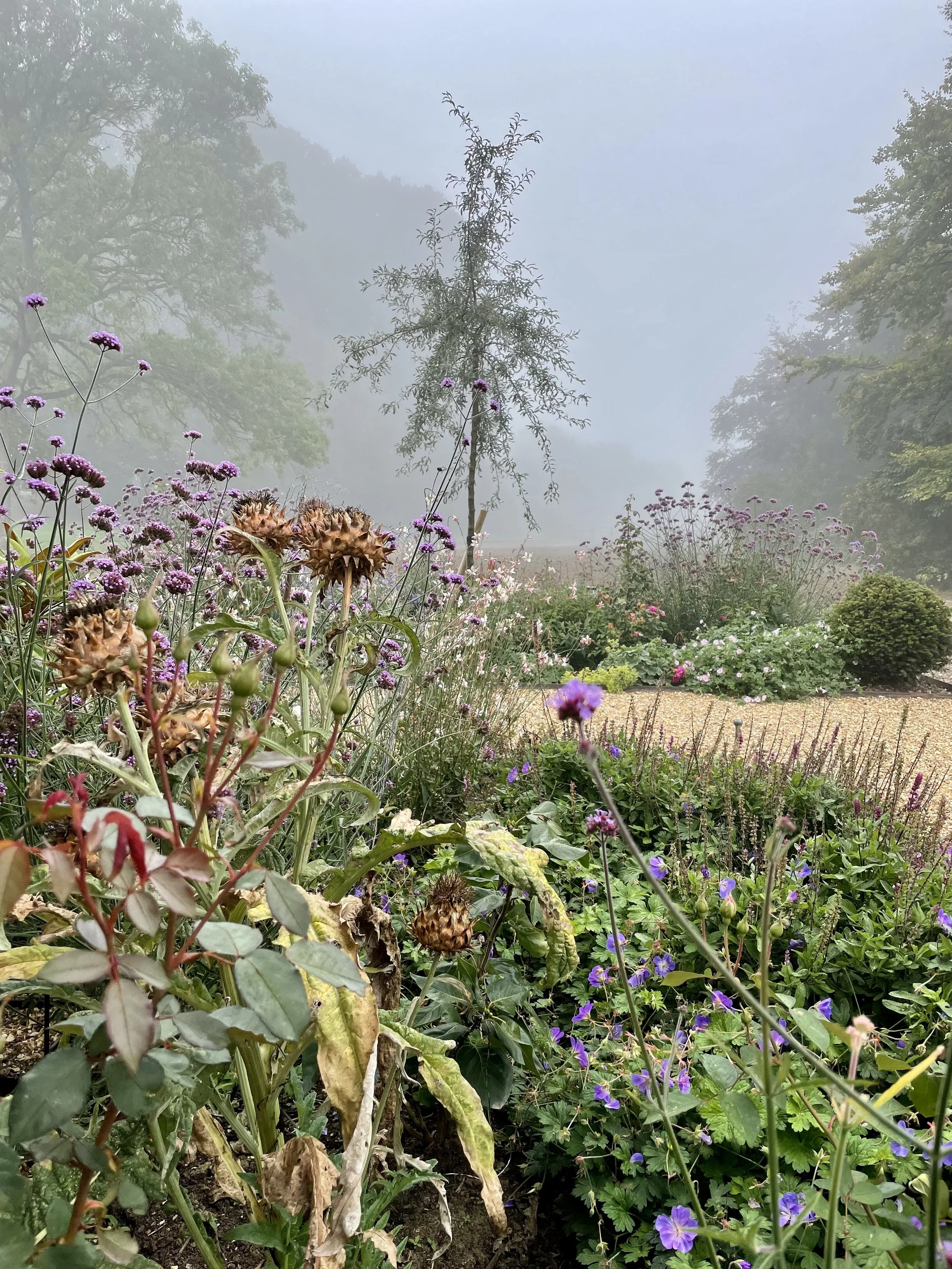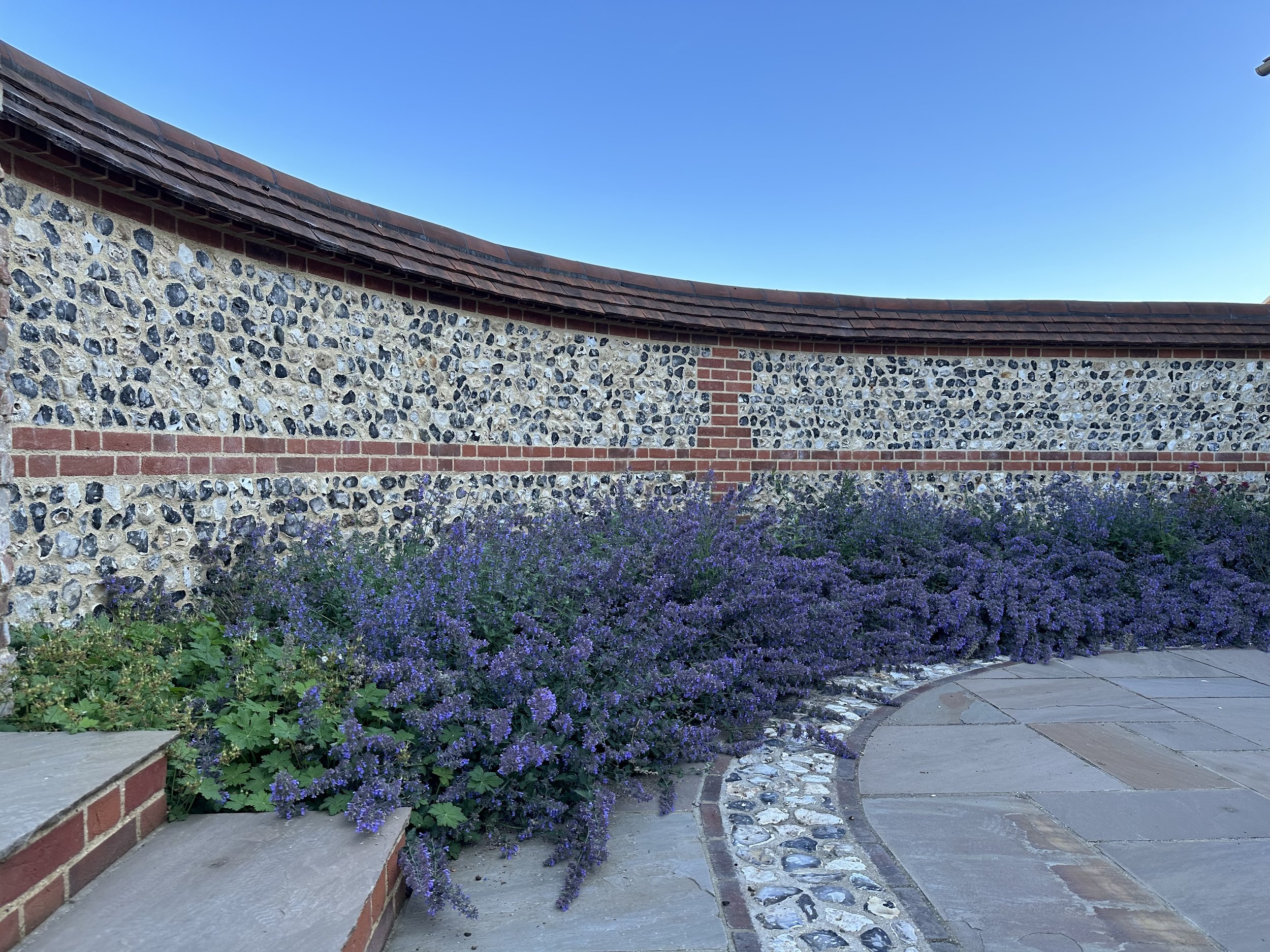
Restored Farmhouse
Hampshire
In a hidden Hampshire valley, surrounded by picturesque vineyards and a magnificent veteran oak tree with a pair of nesting barn owls, this project has a breath-taking setting. When we first visited, it was a building site in full swing, with only a few traces of the original garden remaining: a couple of struggling roses, a scraggy wisteria and some robust geraniums sparked our imagination. A light touch was needed to transform the immediate setting of this newly restored farmhouse, anchoring it to its surroundings and drawing the eye to its heart-stopping views.
The garden was deliberately kept simple, wrapping around the house and adding stone terraces for entertaining. A splendid new wall around the kitchen terrace, linking to an existing bothy, created enclosure and was designed to echo the local brick and flint vernacular. Native hedges were replanted for biodiversity and wildlife shelter, delineating the ornamental garden from the landscape beyond.
The main planting provides year-round colour and interest, with winter structure emphasised by weeping pear trees and topiary balls. In the summer, we indulged our client’s love of roses. Repeat flowering shrub roses, accompanied by masses of perennials including peonies, gaura and salvias, add a tapestry of colour. Simple planting of yellow and blues with silver tones around the kitchen terrace create a cooler mood.
Within a year, the garden was already ‘established’ and has become a place of beauty and elegance.
Front facade of restored brick and flint farmhouse
An initial sketch of how the front facade of the restored farmhouse might look with planting
The studio in summer
The kitchen terrace with its brick and flint wall
The magnificent oak tree
© 2024 Caroline Loup Limited



